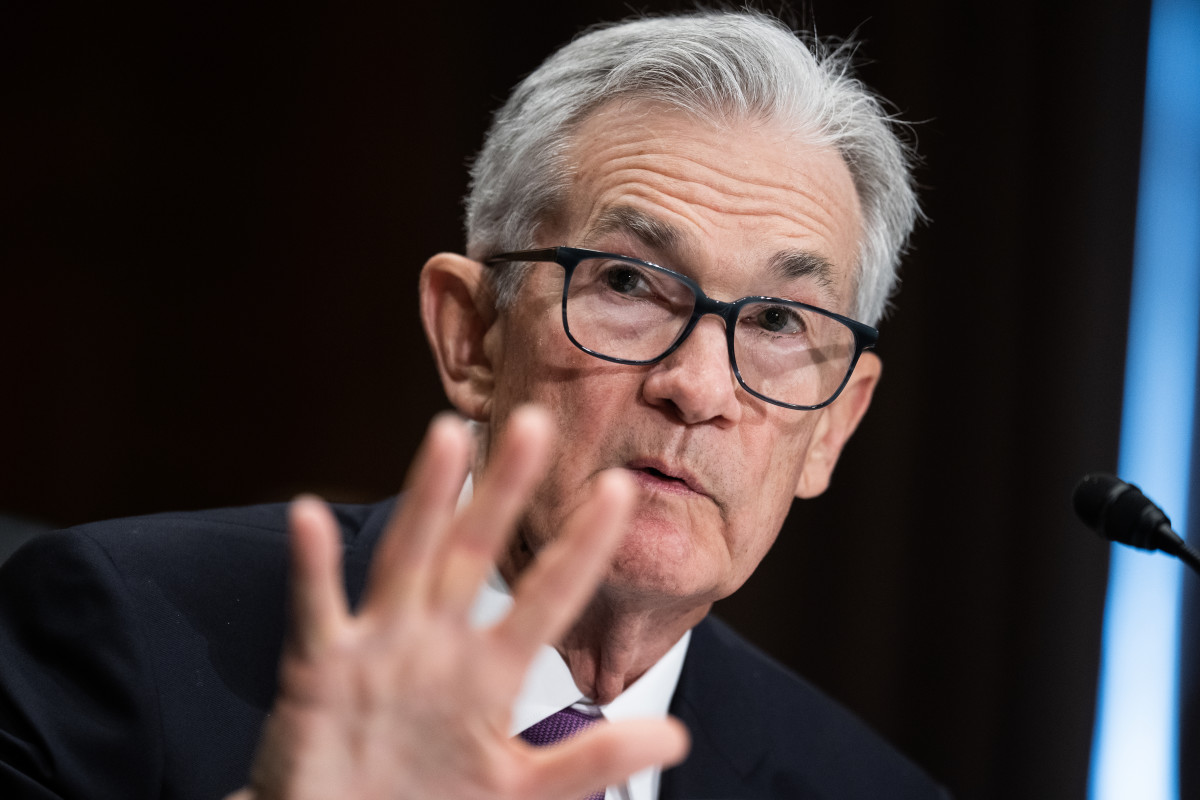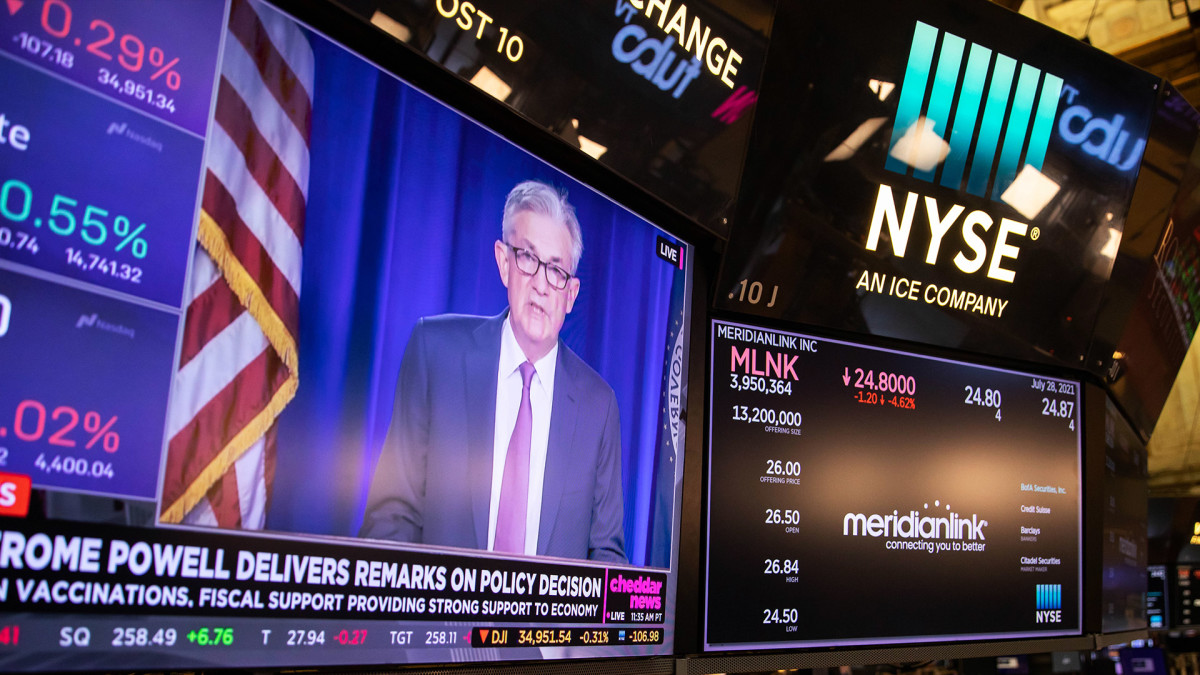
Markets are back to fighting a battle that most participants suggest can never be won.
Investors are betting that the Federal Reserve will likely implement the first of two rate cuts this fall, even as the central bank has stressed that it's not ready to declare victory in the war against inflation.
The Fed kept its benchmark lending rate at between 5.25% and 5.5%, the highest in more than two decades, following a two-day meeting in Washington in June. The parley was highlighted by a benign inflation report that showed price pressures in the world's biggest economy eased during May.
Fed Chairman Jerome Powell told reporters in his post-decision news conference that while all the Fed officials who submitted new growth and inflation projections for the June meeting, "most" were unmoved by data showing the slowest monthly price increase in four years and the lowest core reading since 2021.
The Fed's Summary of Economic Projections, which distills those forecasts into what's known as the dot plots, point to only one rate cut this year, compared with the three cuts forecast in March. Officials see modestly faster inflation pressures over the back half of the year.

"We have stated that we do not expect it will be appropriate to reduce the target range for the Federal Funds Rate until we have gained greater confidence that inflation is moving sustainably toward 2%," the central bank's inflation target, Powell told reporters in Washington on June 13. "So far this year, the data have not given us that greater confidence."
Fed's Powell needs 'more good data' before cutting rates
"The most recent inflation readings have been more favorable than earlier in the year, however, and there has been modest further progress toward our inflation objective," he added. "We will need to see more good data to bolster our confidence that inflation is moving sustainably toward 2%."
A corresponding slide in producer prices, which ultimately feeds into the Fed's preferred PCE Price Index inflation gauge, may have assuaged some Fed officials. Core prices remained flat in May, while the headline reading actually declined by 0.2%.
Related: Federal Reserve updates timing of first interest rate cut
Ian Shepherdson of Pantheon Macroeconomics suggests that the Producer Price Index data and the softer May CPI print could deliver a core PCE reading of 0.1%, well south of the 0.32% average recorded over the first four months of the year.
"Meanwhile, the outlook for slower rent gains, falling wage inflation, and margin compression at retailers suggests that the core PCE deflator will continue to rise more slowly than the Fed predicted this week, laying the foundations for the first rate cut to come in September and multiple easings this year," he added.
Cracks in the job market
The Labor Department's report on weekly jobless claims seems to confirm at least some of that thesis. The latest update showed 242,000 Americans filed for unemployment benefits in the period through June 8, an increase of 13,000 from the prior period and the highest overall tally since August of last year.
Rate traders, who saw their bets on a September cut whipsaw last week after a stronger-than-expected May employment report, revived their hopes of an autumn rate reduction following Thursday's dataset.
CME Group's FedWatch now suggests a 67.7% chance of a quarter-point rate cut in September, with similar odds for a follow-on move in December.
Related: CPI inflation shock resets Fed rate cut bets
“Jobless claims are showing cracks in the job market as inflation cools and the Fed has stayed hawkish, but they have to be careful of fighting the last war," said David Russell, global head of market strategy at TradeStation.
"The dovish case is building. Policymakers were behind the curve fighting inflation in 2021," he added. "We have to hope they won’t repeat the same mistake, but in the opposite direction, in 2024.”
That once again puts markets squarely at odds with the Fed's June forecast. And it sets up another "don't fight the Fed' conundrum heading into the summer on the back of record highs for the S&P 500 and Nasdaq stock indexes and multi-month lows for benchmark Treasury bond yields.
Keep up the Fed fight?
"Every data point that falls into the 'easing inflation' bin increases the odds of a rate cut before the end of the year," said Chris Larkin, managing director for trading and investing at E-Trade From Morgan Stanley.
"But as we’ve seen, the Fed isn’t inclined to read too much into one month’s numbers," he added. "In the meantime, the question is whether the stock market can maintain its momentum if it starts to expect more data like this."
Chris Zaccarelli, chief investment officer for Independent Advisor Alliance in Charlotte, says the main impact the Fed can have on markets now is a surprise change of signaling from rate cuts to rate hikes — "and they show no signs to do this."
Related: Bonds are freaking out about inflation.
"Ultimately, the stock market is uninhibited by a pause (and will continue looking forward to cuts). And this morning’s data further strengthens the case that the Fed’s next move will be a cut (either in late 2024 or early 2025). So we expect the market to continue making records in the near future," he added.
The S&P 500, in fact, is up more than 13% this year, with a 3.2% gain for the second quarter. The index hit an all-time closing high of 5,420.63 points on June 13.
More Economic Analysis:
- Surprise jobs report pummels Fed rate-cut bets
- Jobs report to highlight shift from hot inflation to cooling labor market
- Fed doesn't want to talk about stagflation. It might not have a choice.
Should the Fed opt to cut rates in September, as market bets suggest, it would end the longest gap on record—420 days—between the most recent Fed rate hike and the first-rate reduction.
Jeff Buchbinder, chief equity strategist at LPL Financial, notes that the average S&P 500 gain during a Fed pause is 6%, citing data collected over the past five decades.
Longer pauses, however, have produced better results: Buchbinder says the average gain over the past six policy gaps, going back to 1989, has been slightly more than 13%.
The broadest benchmark of U.S. blue-chip shares has gained more than 13.5% since the Fed hiked rates on July 26 of last year, while the tech-heavy Nasdaq has gained 24.8%.
Clark Bellin, president and chief investment officer at Bellwether Wealth in Lincoln, Neb., sees more gains ahead "as the market starts to price in a world of disinflation and continued corporate earnings growth.
"The stock market is forward-looking, and even though inflation is still elevated, it's looking ahead to a time when inflation is lower," he added.
Related: Veteran fund manager picks favorite stocks for 2024







